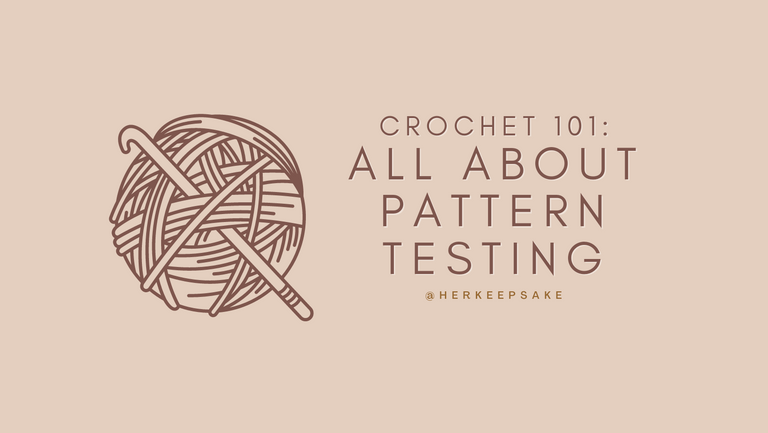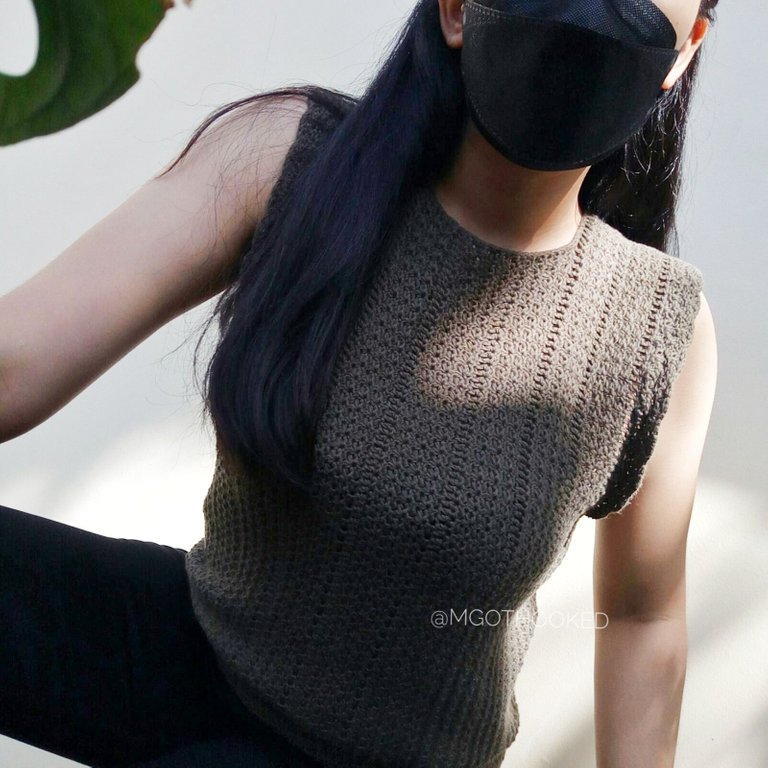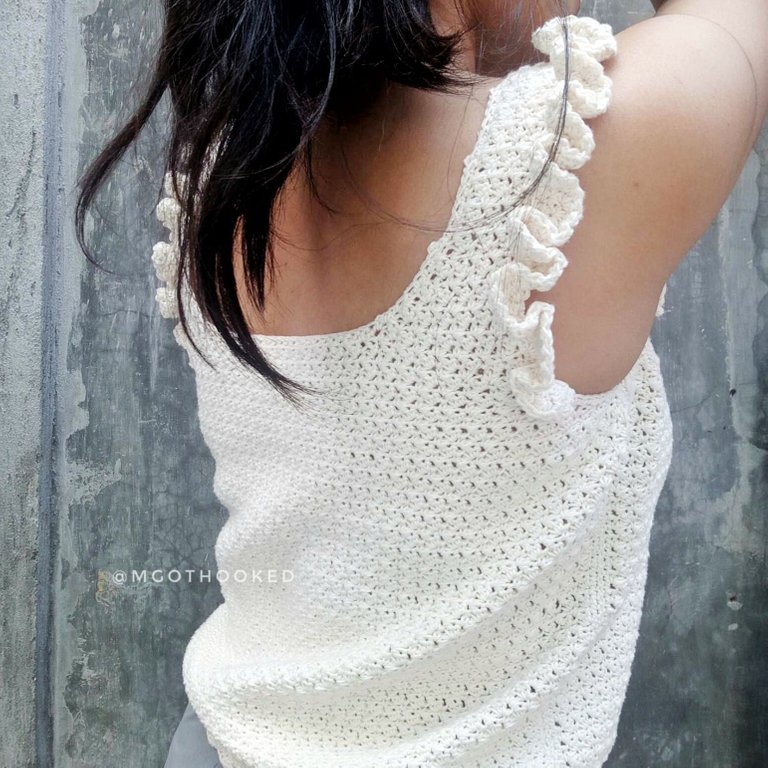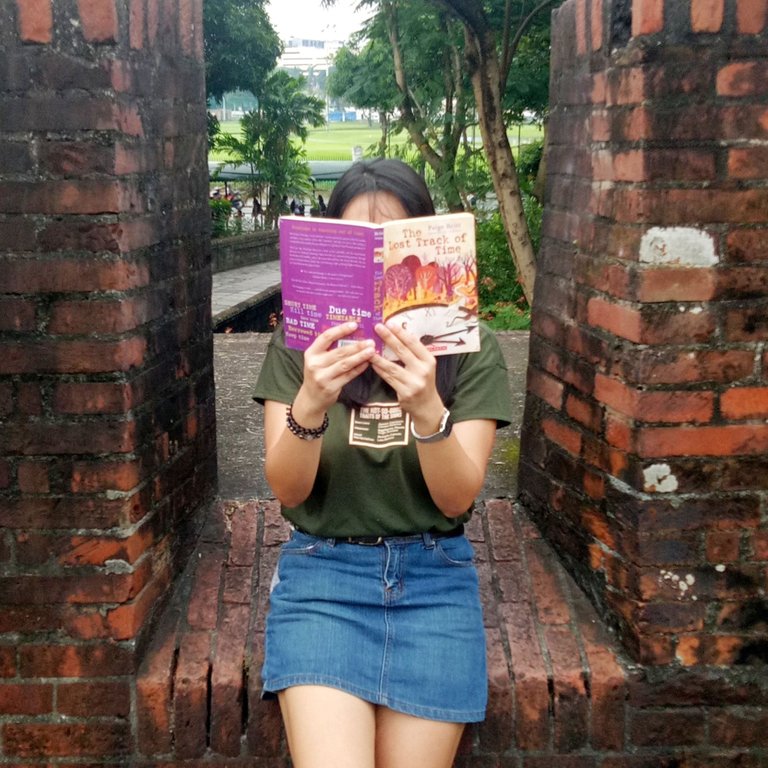
The past months, I have been sharing here the crochet patterns I have tested. So far, I've tested 5 patterns by different designers. In my previous posts, there were a few people who commented that they didn't know that there is such thing as pattern-testing while some asked me how to apply as one.
I am fairly new to this as well, and honestly, I was also surprised when I first learned about pattern-testing. In this post, I would like to share with you the things I know about this, including my personal experience, how to apply and other things related to it.
Disclaimer: I am no expert in pattern tests or crochet in general. The things that will be mentioned here are all based from my personal experiences and little knowledge about the craft.
What is a pattern?
In the crochet world, a pattern is a written step-by-step instructions on how to create a certain crochet design. It also includes the materials and measurements needed. Depending on the designer, some patterns include photo or video instructions and/or a lookbook containing the photos and information about the pieces made by the pattern testers.
There are different types of patterns.
Graded pattern - this is a way of writing a pattern wherein the designer already writes the specific number of stitches needed for every size. Some people find this easier as there is no need to measure one's body for every part of the design. And because this is the case, crochet artists are advised to use the same yarn weight used by the designer. If one wants to use a different yarn weight, a gauge swatch is required so you'll get to see the equevalent number of stitches for your preferred yarn weight.
Made-to-measure - I feel like this is a more common pattern-writing technique used by most designers, especially the Filipino designers I know. Personally, I prefer it as well. Unlike the graded patterns, there are no specific number of stitches included in made-to-measure patterns. Instead, the designer will write instructions on what and how to measure your body. This makes MTM patterns easier to customize as well!
Graph Pattern - I personally haven't tried following a graph pattern. I am not even sure if this is how it's called. Haha. If I am not mistaken, graph patterns are used when making tapestry crochet projects.
Now that we're done identifying the types of patterns, let us now talk about pattern-testing.
What is a Pattern Test?
From the term itself, pattern-testing is an activity wherein crochet pattern designers look for other crochet artists to test his/her pattern before releasing it to the public. Most often than not, testers are not paid to do the test. In return, the designer usually give the testers a copy of his/her final written pattern for free. Yep, I know this sounds endearing, but there are also several things to consider before applying as a tester. We'll talk more about that later.
Anyway... crochet designers usually posts about their Call for Testers in their pages/social media accounts. Personally, I learn about these through Instagram, but I think some also post in Facebook groups or Twitter. If you are interested in testing a pattern, I suggest you follow designers, join FB groups or check some hashtags (e.g. # PatternTesterCall, # LookingForPatternTesters, # PatternTestersNeeded, etc.).
Things to consider before applying as a tester
The idea of testing a pattern is unnerving and exciting! I, too, gets giddy whenever I am chosen as a tester. I mean, isn't it soooo cool how a designer trusts you with his/her design? That is their baby they are letting you check and try before anybody else!
But before being too hyped up, please do remember that being a tester is also a responsibility. Each designer has their own requirements, rules, and/or guidelines, which should be read carefully before an application is sent. In my case, I ask the following questions to myself before applying:
- Do I genuinely like this design?
- Will I actually wear this?
- Do I have the materials needed? I not, will I be able to get them within the given time frame?
- Will I be able to finish the project before or on the indicated deadline?
- Do I have the energy and drive to take pictures and give feedback?
- Will I be able to meet the other conditions of the designer?
Most often than not, if I answer even one of these with a no, I don't push through with the application. The designers put so much love and time in their designs and patterns, so it is only fair to apply if I can commit myself to it 100%. We gotta respect each other, yknow! And we have to be kind to ourselves as well. If your main reason for testing is to get the pattern for free, then please just back off, and give others who genuinely want this a greater chance to be chosen.
How do designers choose their testers?
I read on IG Stories that there are some people who ask designers about their criteria in chosing a tester. Each designer has thier own criteria in choosing, but these are the most common answers I've read, so far..
- one must have a public IG crochet account
- high quality photos on the feed (not neccessarily professionally taken, but decent enough to highlight the beauty of the design)
- skill level/experience in testing is not neccesarily a problem, as most designers like to vary their testers from beginners to intermediate to pros
- a lot also mentioned that the number of followers doesn't matter that much :)




Final-ish thoughts
I have been testing a pattern for just around 4 months. My first pattern test started last January 2022, and was released on February 2022. After being chosen in my first pattern test, I gained more confidence in submitting applications, as I initialy was verrryyy hesitant in doing so. I continued submitting applications to the tester calls that I absolutely loved, and honestly, I wasn't even expecting to be chosen. I value each pattern test experience I've had, as I learned a lot of things, not just in the technicalities of crocheting, but as well as the vibe of the whole community.
It's so amazing how artists from the different parts of the world get connected because of their love towards the same craft. I got to talk to new people, which is actually nice, especially for someone like me who hasn't been having an active social life (both offline and online) for the entirety of the pandemic.
There are a lot of wonderful and supportive artists in this community, so I really hope that respect will be present at all times. This includes respecting the artist AND their works. Every design and every piece that an artist makes took countless hours, sleepless night, aching wrists, and exploding braincells before it is being born. We also have to be reminded of this.
Also, if you happen to take a hold of a pattern or bumped into free tutorials for certain designs, you should NEVER plagarize their design. It is also prohibited to resell/redistribute/reproduce written patterns by other designers, whether they are paid or given away for free. :)
Ummm.. okay. That's it for now! I hope that this post has helped you in a way. If you have any other information or questions about pattern testing, please feel free to leave a comment.
If you would like to have updates on my crochet journey, follow me on Instagram (mgothooked).
Stay sane and safe!
Let's spread happiness.

herkeepsake
❤
This is a wonderful summery for everyone who is reluctant to try out pattern testing and the testing is so important for the designer.
I guess in Europe (and on ravelry) the graded patterns are more common so for these I would add one item to your list of how designers choose the testers which is important: the size/figure of the tester. For longer there is a movement to make more size inclusive patterns in crochet or knitting and I noticed that pattern testers with more unusual figures (very small or big sizes) are in higher demand than people between size XS-L.
So far I only once applied to be a tester and then had to decline when I was chosen, as the designer wanted the testers to use exactly one kind of yarn and this was so expensive - wow, I would never buy something like this. I found it sad that we could not substitute the yarn…
Ohhhh! I haven't tried using a graded patterns because like you said, it would require a more or less similar yarn they used... or we have to be very careful with the gauge swatch (which is something i am not super fond of haha). That's why i like made-to-measure, as we are more free to use any materials we have or want.
Thank you for the additional thoughts on this!! ❤
This is so awesome! Now I want to have something like this in my wardrobe!
aawww thanks! and I agree, it is nice to have at least one handmade clothing in our closet! haha